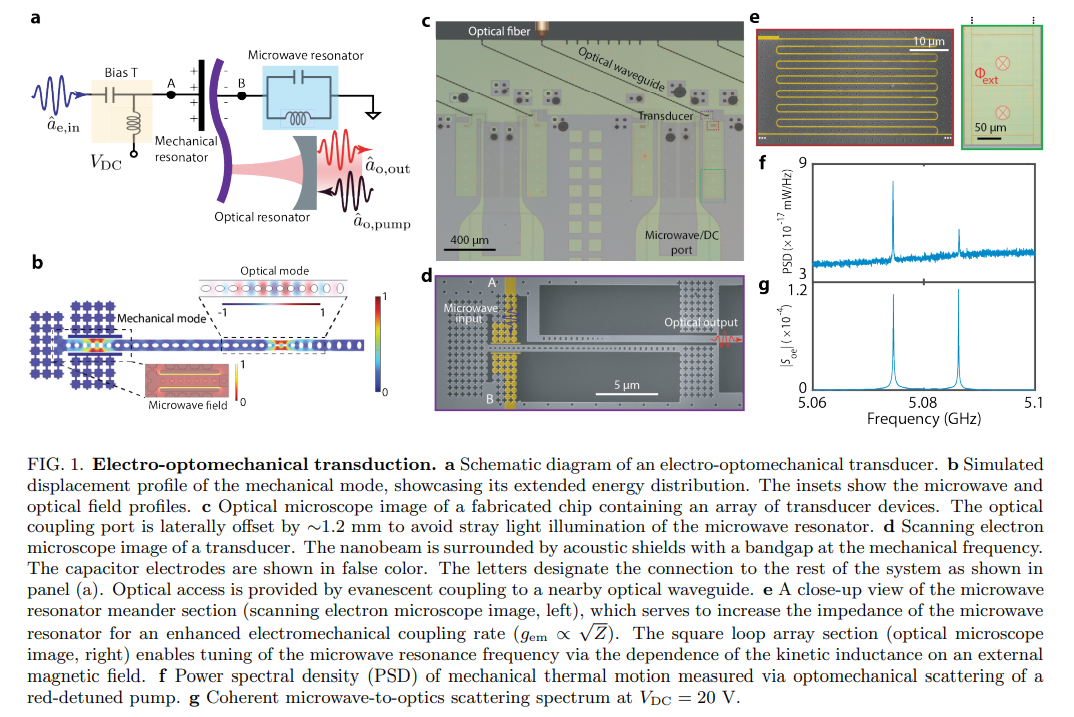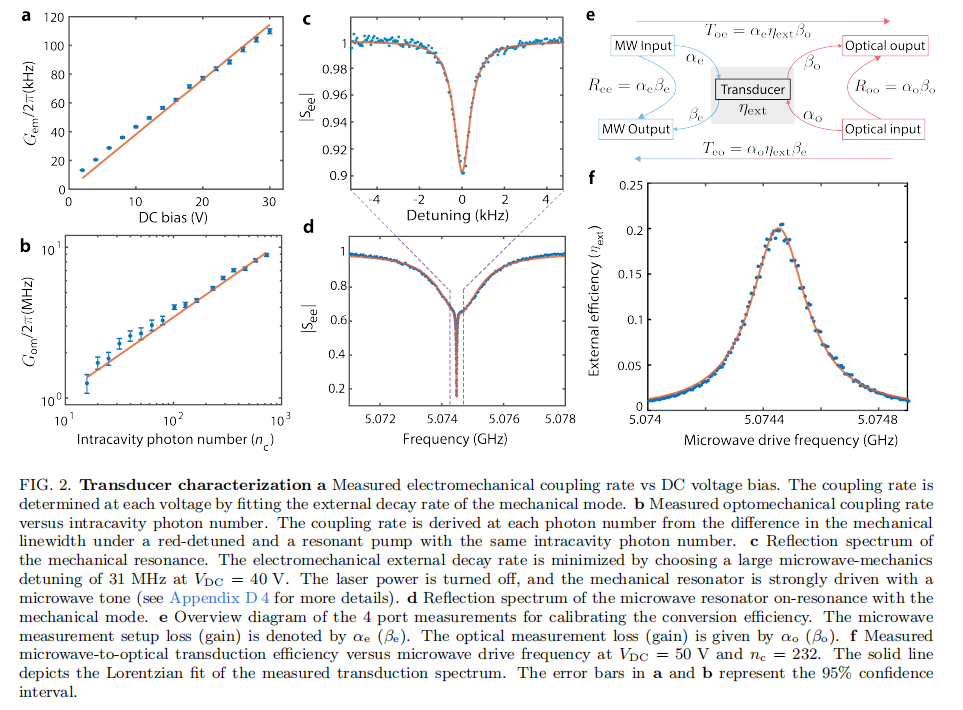Quantum-enabled continuous microwave-to-optics frequency conversion
2024-06-06 16:13
2481 浏览
A quantum interface between microwave and optical photons is essential for entangling remote
superconducting quantum processors. To preserve fragile quantum states, a transducer must operate efficiently while generating less than one photon of noise referred to its input. Here, we present
a platform that meets these criteria, utilizing a combination of electrostatic and optomechanical
interactions in devices made entirely from crystalline silicon. This platform’s small mechanical
dissipation and low optical absorption enable ground-state radiative cooling, resulting in quantumenabled operation with a continuous laser drive. Under the optimal settings for high efficiency
(low noise), we measure an external efficiency of 2.2% (0.47%) and an input-referred added noise
of 0.94 (0.58) in microwave-to-optics conversion. We quantify the transducer throughput using the
efficiency-bandwidth product, finding it exceeds previous demonstrations with similar noise performance by approximately two orders of magnitude, thereby paving a practical path to interconnecting
remote superconducting qubits.




Article:https://arxiv.org/abs/2406.02704
